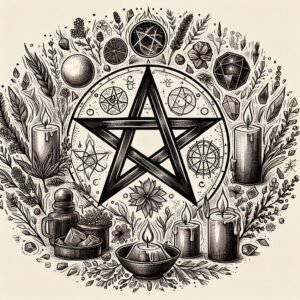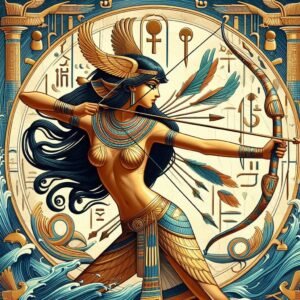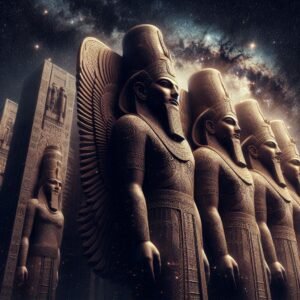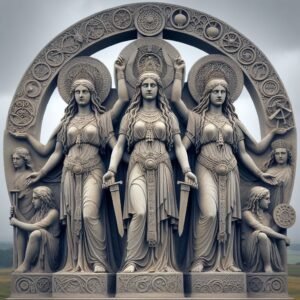
Ereshkigal is a prominent figure in Mesopotamian mythology, known as the goddess of the underworld. Her name translates to “Queen of the Great Earth” or “Lady of the Great Place.” She rules over the land of the dead, often referred to as Kur or Irkalla, and is responsible for keeping the dead within her realm and preventing the living from entering. Ereshkigal is often depicted as the sister of the goddess Inanna and is featured in the myth of Inanna’s descent into the underworld. She is also known for her marriage to the god Nergal, with whom she co-rules the underworld.
According to some sources, she had a sister named Nungal, who was also associated with the underworld.
Nungal, also known as Manungal, was a Mesopotamian goddess associated with prisons and sometimes the underworld. Her name means “Great Princess” in Sumerian. Nungal was worshipped particularly during the Ur III period in cities like Nippur, Lagash, and Ur. She was considered the daughter of Ereshkigal and Anu, and her consort was Birtum.
Nungal’s primary domain was the prison, where she was believed to oversee the separation of the guilty from the innocent and offer a chance for redemption. This role is highlighted in the “Hymn to Nungal,” a Sumerian poem that praises her and the prison she presides over. The hymn suggests that imprisonment under Nungal’s watch could lead to purification and rebirth, reflecting an idealized view of justice and rehabilitation in Mesopotamian society.
Additionally, some texts mention that Ereshkigal had brothers, including Ninazu and Namtar. The relationships among these deities often vary depending on the mythological source.
Worship of Ereshkigal
Ereshkigal was primarily worshipped in the ancient Mesopotamian city of Kutha, where her main temple was located. Her worship extended beyond Kutha to other regions, including Anatolia, Egypt, and southern Arabia. Despite her significant role in mythology, her cult had a relatively limited scope compared to other deities.
Ereshkigal was often invoked in funerary rituals and mourning ceremonies, where she was acknowledged as a compassionate guide to the deceased. These rituals emphasized her role in overseeing the transition from life to death and ensuring the proper passage of souls to the underworld. Additionally, Ereshkigal was associated with the planet Venus, symbolizing her connection to both the celestial and the underworld realms. Her worship included offerings and prayers to honour her and seek her protection for the deceased.
Seeking Ereshkigal’s favour during childbirth was not a common practice, as she was primarily associated with the underworld and the dead. However, in some cases, people might have invoked her protection to ensure the safe passage of both mother and child through the potentially dangerous process of childbirth. This could involve prayers and offerings to appease her and seek her mercy. Additionally, rituals might have included invoking other deities more directly associated with childbirth and fertility, such as Inanna or Ninhursag, while still acknowledging Ereshkigal’s overarching influence.
Subscribe to our post updates - Don't miss a thing!!







